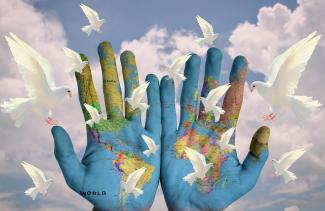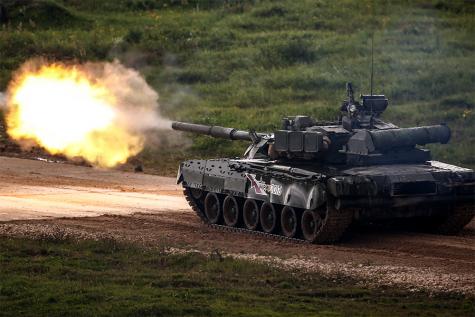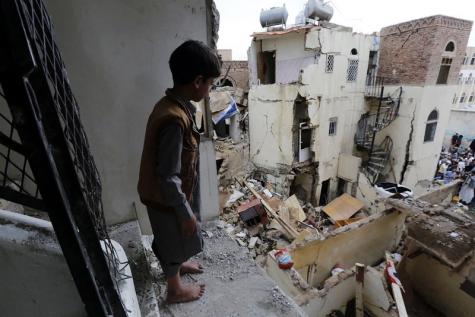
Must-have guide to the world of peace. Discover everything from nonviolent conflict resolution to the humanitarian crises that follow wars. We expose military budgets and the increasing militarization of the world. Learn about anti-nuke campaigns, disarmament, peace education, peace building, and so much more!

Without peace, nations, individuals, and the planet cannot progress or move forward. Peace, along with justice and freedom, forms the foundations of our human rights. Without peace, we cannot live in dignity.
Despite this, peace work remains massively underfunded. The U.S. military receives $1,000 for every $1 dedicated to peace efforts! If peace is the goal, then why spend 1000:1 in favour of destruction, misery, and death?
This incredible guide into the peace world brings you access to top peace news sources where these answers can be found. Magazines, blogs, and social media outlets whose goal is to spread a culture of peace and nonviolence across the globe.
You will find alternatives to military solutions and campaigns fighting against military spending, such as the inspiring GCOMS initiative. Peacebuilding, disarmament, and conflict resolution, especially in developing countries, should be the focus of world leaders - not expanding profits for the greedy military and weapons industry.
NGOs and peace movements work for a world where peace negotiations, communication, and nonviolent solutions are the first choice for politicians.
Peace films and events are growing in popularity as a way to raise awareness, bring together likeminded individuals, and pool funding and campaigns. Peace prizes such as the Nobel Prize highlight the courageous efforts of peace workers.
Several peace memorial days such as Hiroshima Day, and the International Day of Peace, call for ceasefires, and raise the profile of the terrible consequences suffered by those who are denied their human right to peace.
Peace tax proposals would reduce our complicity in wars, and act as form of conscientious objection. War resistance is vitally important in the fight for peace, and against compulsory military service. Conscientious objectors fight against repressive governments for their beliefs, often at risk to their own lives.
Peace education, peace studies, and conflict research, are invaluable tools to aid peace efforts. By educating locals to their rights, we can raise awareness of alternatives to military action, and teach tolerance and communication skills. By collecting data, we can learn about the areas that most need assistance, and deescalate tensions through open dialogue.

Global military spending in 2021 was $2,113 billion!!! Reaching TWO TRILLION USD for the first time. If we reap what we sow, then why do world leaders consistently sow the seeds of conflict and war?
This grotesque spending feeds the military complex, and lines the pockets of weapons contractors, corporations, shareholders, the financial elite, and the mass media - who all benefit from being in a perpetual state of war.
We believe that wars are the ultimate form of terrorism, and that they cannot be justified. As new coups, dictatorships, and military juntas arise, it seems we do not learn from history. WWI & WWII, the Vietnam War, and the Spanish Civil War are excellent examples of the devastation that results from military action.
The U.S. War on Terror actually resulted in the creation of MORE terrorists. $8 trillion was spent creating 15 million refugees. It led to the death of 250,000 civilians, and created 1.8 million U.S. disabled veterans.
Unsurprisingly, the U.S. are the world's largest weapons exporter. The arms trade is estimated to be worth $118 billion! A huge number of NGOs work solely to campaign against this business of death. Arms fairs are often targets for protests calling for disarmament.
With the advancement of technology, and massive investment, weapons are becoming more and more sophisticated – and deadly. Weapons systems such as killer drones, killer robots, AI, F-35, and nuclear weapons, are of huge concern to the anti-weapons movement.
Atomic, biological, and chemical weapons (ABC) are notorious for their devastating health and environmental impacts. ICAN work tirelessly to prohibit and eliminate the use of nuclear weapons. Through a coalition of NGOs, they enforce the Nuclear Weapon Ban Treaty.
The Nuclear No First Use policy and the NPT, also aim to prevent the use of nukes. The dangers and costs of nuclear weapons are well documented, yet threat escalation, and proliferation continue.
Controversial military defence partnerships such as NATO and AUKUS, labelled as peace alliances, only intensify the arms race, and condone massive military build-ups.
NATO posturing, eastern expansion, and weapons exports contributed to the Russian invasion of Ukraine. Intimidation by weapons stockpiling creates tricky and potentially suicidal geopolitical relationships.
Disarmament campaigns call for sanity, and the total elimination of weapons of mass destruction. Initiatives such as CAAT, CND, and GCOMS fight for demilitarization, and against the unprecedented prodigal spending we are witnessing by militaries around the world.
Search military by country to find the most accurate information on budgets, weapons policies, and key issues, including of course a thorough guide to Pentagon spending.
Alternatively, search by topic for the latest on the arms industry, war veterans, the militarization of space, the militaries impact on the climate, and much more.

Devastatingly, 2 billion people live in conflict areas today. This is the equivalent of one quarter of the human population. Despite the horrifying wars of the past, humanity never seems to learn its lesson. In fact, the world is currently experiencing the highest number of conflicts since 1945 – the end of WWII.
Conflict is driven by complex political, social, religious, and discriminatory systems. It is fuelled by ignorance, hate, state-controlled media, weak democracy, greed and corruption. Citizens are always the losers in war.
The inevitable humanitarian crises that follow leave citizens surrounded by violence, death, and fear. Victims of war are forced to leave their homes resulting in millions of war refugees who face life-threatening journeys, only to find deplorable conditions in border camps.
Education and work become impossible. Assets become worthless, and health care systems are crippled. Water supplies become non-existent, farming systems collapse, and food supplies are cut off.
Women’s and children’s rights are always forgotten. They suffer at the hands of soldiers, even becoming victims of rape. Ultimately, quality of life for everyone is reduced to a point where basic needs cannot be met, neither internally, nor through aid channels.
Better World Info offers a comprehensive resource featuring insight into the world's most devastating current and past conflicts in fragile states. You will find in-depth background analysis on the causes and consequences, the humanitarian NGOs assisting, and potential peaceful resolutions.
Discover a unique peace perspective on the Ukraine-Russia conflict, with analysis on the implications of NATO expansion, as well as Western weapon exports into Ukraine, the global economic consequences including Russian gas and oil, sanctions, and much more.
The Yemeni Civil War is not only one of the most under reported, but also now the world's worst humanitarian disaster ever. It began back in 2014 when Houthi insurgents took over the country's capitol. Relentless bombing by Saudi Arabia and the U.S. has only escalated tensions and led to almost 250,000 deaths. An ongoing economic crisis is crippling the country further, and stretching citizens to the absolute brink.
Extensive coverage of the U.S. invasions of Iraq and Afghanistan offer complete background knowledge, ongoing developments, and analysis of the forever war. Follow the Taliban takeover as they continue their assault on women's rights, and reinstate many of their harsh penalties from previous rule. Find information on international isolation, protests, diplomatic solutions, elections, human rights, sanctions, and voices for peace in all regions.
Food for thought - $8 trillion was spent by the US military on the Afghan war in 20 years. This is $2 trillion more than the annual U.S. Federal Budget, DOUBLE the global annual budget for the Sustainable Development Goals AND the Global Aid Budget (OECD) for 50 years.
The Israeli – Palestinian conflict is one of the most prolonged conflicts witnessed by the world. Citizens have endured conflict since 1948 after the creation of the State of Israel - igniting the first Arab-Israeli war. Ruled by the militant group Hamas, the Gaza Strip has been plagued by Israeli bombing and tight restrictions. Find info on ceasefire initiatives, protests, West Bank annexation, the troubled peace process, and much more.
Increasing tensions being felt all over the African continent are being closed monitored. Coups, military takeovers, and daily violence has become the norm in many countries including Sudan, the CAR, Ethiopia, and Libya.
Additionally, climate change is becoming an increasing driver of conflict. Violent disputes arise over land, depleting resources, and agricultural boundaries. Of the 25 countries deemed most vulnerable to climate change, 14 are plagued with conflict. These countries also tend to be some of the poorest, lack strong governance, and are less able to adapt to a changing climate.
Bottom line - Wars never bring peace. Statistically, nonviolent resolutions have a success rate five times higher than violent ones. As UN Secretary- General Ban Ki-Moon said, “The world is over-armed and peace is under-funded.”
Better World Info stands as a voice for peace, a platform for truth, and fight against military propaganda and misleading enemy images. Open dialogue, diplomatic negotiations, and de-escalation should always be sought first.
Instead of supporting the multi-billion-dollar arms industry, and bloated military budgets, we support the peace movement, increased peace funding, development aid, and investment in social projects – to create a better world for everyone.
.
Article by Rachael Mellor
PEACE by Rachael Mellor is licensed under CC BY-NC-ND 4.0
.
Image 1:“Untitled” from Pixel2013 is published under Pixabay License
Image 2:“Non Violence” by Maria Eklind is licensed under CC BY-SA 2.0
Image 3: “Army-2016 (2016-09-10) - 22.jpg” by Sergey Bobylev @ Ministry of Defence of the Russian Federation is licensed under CC BY 4.0
Image 4: “323 Child Observing Sanaa Ruins” by Felton Davis is licensed under CC BY 2.0